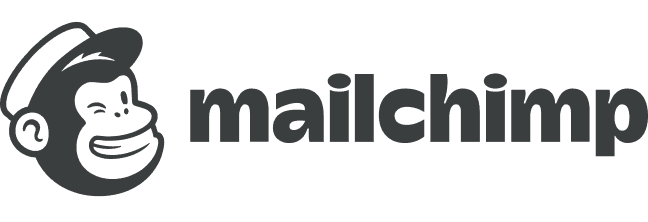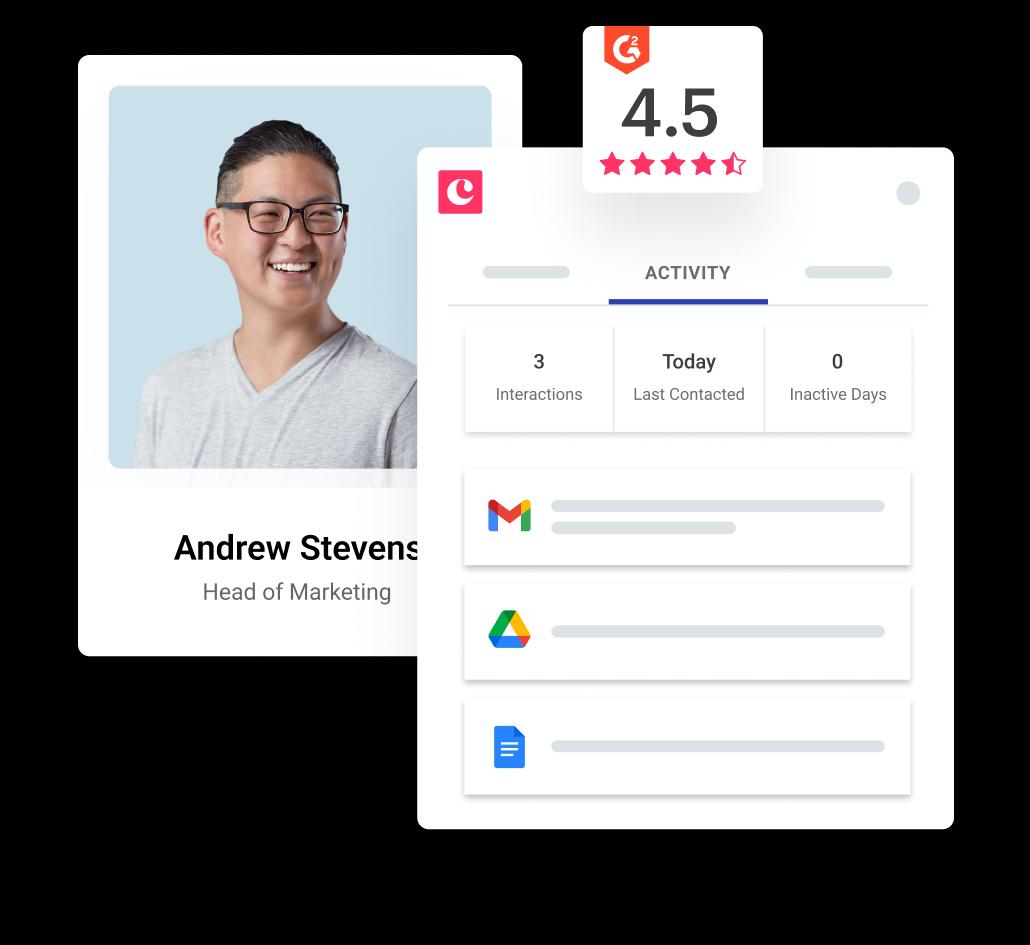
Wyndham Hudson
Vice President of Product at Copper
Food for thought: today’s sales teams spend less than 36% of their time performing tasks that directly result in closing deals.
In a business landscape where salespeople spend so little time actually selling, automation has created an opportunity for you to win back your schedule.
According to a recent study, companies that have implemented sales automation processes have a 53% conversion rate and a 3.1% annual revenue growth. The same study notes that automating manual tasks can also reduce operating costs by up to 90%.
The takeaway? Automating manual sales tasks can save you time and money, and potentially boost your revenue.
And despite popular belief, adopting sales automation isn’t a complicated or expensive process reserved for big-box companies.
Below is a breakdown of how you can automate sales tasks in Copper regardless of your business’ size, scope, or budget:
Reporting
A staggering 52% of sales reps waste time going through out-of-date and inconsistent information from different sources when they're creating performance reports.
If you’re responsible for keeping tabs on your sales pipeline, you need to maintain a record of your sales activities. This includes your total number of calls completed—and their outcomes.
While spreadsheets are great for gathering and storing data, they make it difficult to pick out and understand the most important numbers quickly.
Oh, and you’re also looking at several hours of manual data entry. There’s also no guarantee that the numbers are 100% accurate (hint: a CRM can help with that.)
Simply put, automating your reporting routine frees up valuable time.
For example, Copper allows you to generate sales reports automatically and share them with anyone on your team:
Before you automate sales tasks related to reporting, it’s important to list all the reports you need and the key performance indicators (KPIs) you want to track. This might include sales calls or emails, qualified leads, and deals closed.
Copper can help you make sense of all of these metrics and then some. Here are a few things that you can do using automated reports in Copper:
Spot sales trends over time
Reports enable you to examine sales trends over a weekly, monthly or quarterly period of time.
For example, are your growth and revenue consistent? How do this month’s opportunities compare to last month’s?
Because CRMs automatically track everything related to deals like dollar values, conversations, close dates, and more, they can easily generate reports that give you the answers you need:
Beyond big-picture trends, you can also monitor the progress of individual sales reps. Doing so allows you to drill down and determine your team’s individual performance and how they could improve:
Make your sales data visual
Fact: two-thirds of people consider themselves to be “visual learners.”
Translation? Your company’s sales data should be easy to digest at a glance.
In fact, reports that incorporate charts, diagrams, maps, and infographics are 30 times more likely to be read than a text-only version.
Copper’s report builder gives you sleek, color-coded graphs and charts which are prime for sharing with your team.
For example, let’s say you want to look at the current state of your sales pipeline and understand which stages yield the most opportunities.
Automated based on your CRM data, Copper is capable of populating a report based on your team’s completed and in-progress tasks.
Based on your data, you can prioritize your high-quality opportunities accordingly. Rather than second-guessing what your team should be focusing on, the report provides the answers loud and clear. This is all done without having to dig through spreadsheets or sales data yourself.
Beyond these reports in Copper, its Google Sheets integration can translate your existing spreadsheet data into visuals as well:
Predict future deals and revenue
Automated reporting isn’t just about looking back at past data—it’s also about predicting the future.
Projecting sales can be both time-consuming and error-prone when you're doing it manually. Beyond wasting time calculating your sales data by hand, you might miss out on variables such as win rate and opportunity cost—which could result in inaccurate predictions.
On the flip side, sales forecasting in Copper makes it easier to predict the number of deals that are expected to close and their estimated value based on concrete data.
The ability to automatically forecast revenue makes it easier to set realistic sales quotas since it shows you your team’s typical performance on a month-to-month basis. You’re also more likely to make accurate predictions since all of your sales data is directly pulled from your CRM:
Analyze the performance of your team
The importance of “owning” your data can’t be emphasized enough.
Remember: almost 25% of employees quit because they don’t have key information related to their own KPIs.
A CRM can bring everyone's data into a single report. This makes it easier to identify key performance metrics.
For example, Copper can generate both team-wide and individual sales dashboards broken down by sales activities, opportunities, and revenue. The ability to see these data points at a glance enables you to tweak your sales approach accordingly:
Reporting helps everyone stay accountable while also providing you with some much-needed motivation.
For example, Copper’s sale leaderboards can create a sense of healthy competition to get you fired up to totally crush your quotas:
Identify bottlenecks and potential problems with your pipeline
Automated reports help you identify bottlenecks in your sales pipeline so you can see who might need more help to close sales:
Your CRM could also connect with other tools to clue you in on potential problems or opportunities. For example, you can integrate Copper with Slack to receive real-time notifications when a lead is converted (or if you're in danger of losing the deal).
Ultimately, automated reports can boost the sales productivity of your team (here are other tools for that)—and strengthen your client relationships with minimal work on your part.
You probably spend a ton of time in your inbox.
Cold emails. Scheduling meetings. Follow-ups. The to-do list never ends, does it?
While all those tasks are important, they might not be the best use of your time. In order to grow your business and get more sales, you’re probably better off spending your time on building relationships with prospects and leads—not juggling tedious tasks like emailing.
The good news? There are plenty of ways to automate your email-related sales tasks. Let’s look at how automation can help you spend less time writing emails—while making them more personalized.
Email personalization
Customers want (and deserve) to be treated as more than just metrics.
In the Relationship Era, it’s crucial to prioritize personalization according to your customers’ wants and needs.
But according to an Edelmann Group study, the majority of brands don’t recognize the basic interests, concerns, and motivations of their customers.
As a result, more and more people are moving on from brands that don't care about their preferences when sending marketing messages.
By personalizing just 20% of your email content, you can increase the open and reply rates by 40% and 112%, respectively.
Interestingly, these numbers drop dramatically if you personalize over 80% of your email content. In other words, deviating too much from an email template can negatively impact customer engagement:
So, how you automate sales tasks can be a balancing act; you obviously don’t want all of your time going towards creating and customizing email copy for every single lead.
After all, the average salesperson spends nearly 21% of their time on emails every day—a large part of which includes repetitive data entry tasks like importing files and manually segmenting databases.
If you want to send as many emails out while making sure they're personalized enough for each person, take the 10/80/10 approach: personalizing only the first and last 10% of an email.
By doing this, you can save time by creating, saving, and repurposing email templates that go out to multiple prospects and customers at the same time.
For example, when you send bulk emails in Copper, you can add personalization fields (called “merge tags”) to the template. These can be edited to address individuals based on details such as their first name and company. Email templates sync with your CRM data, meaning that fields such as #FirstName or #SenderCompanyName are automatically populated.
Here's an example of how you'd create a "how's it going" email template in Copper with custom fields:
Email templates give you that much-needed balance between personalization and productivity when it comes to email. Though templates and merge tags, Copper enables you to personalize your email so that it's:
- Unique to the customer (purchasing history)
- Aligned to the customers' pain points (positioning your product/service as a problem-solver for a specific challenge your target audience faces on an everyday basis)
- Based on the buyer's persona (age, gender, or job profile)
- Based on the customer’s position in the sales cycle (are they in the awareness or the decision-making stage?)
And hey, Copper can help you hone in on some of these key details as well.
Copper automatically populates important contact details (company size, social handles) while also allowing you to input your own notes. All of this happens directly in your Gmail inbox. These features are helpful for personalizing your outreach when you have little-to-no information on a potential contact:
Having personal details on hand gives you a complete and accurate profile of your leads and prospects. It’s much easier to remember who’s who and build relationships when you’re able to learn your contacts’ specific needs and personalities.
Make it a goal to move away from the traditional one-size-fits-all approach to email and experiment with personalization. Using automation to create emails that cater to the receiver’s interests not only saves you time but also results in high open and click-through rates.
Email nurturing
Given that you should expect to follow up at least five times with any given lead, taking the time to automate sales tasks related to nurturing relationships is a huge time-saver.
In short, nurturing represents the process of communicating with your contacts as they go through each stage of your sales funnel. This includes asking and answering questions, suggesting next steps (think: demos, hopping on a phone call) and eventually converting your leads.
Note that nurturing is a process that could take weeks or months (if not longer). Juggling so many follow-ups when you’re managing dozens of relationships with customers, prospects, and more leaves a lot of room for error. If nothing else, crafting each and every follow-up manually is a stressful time-sink.
Of course, email templates are a good starting point if you’re looking to save time during outreach.
For example, you can create follow-up messages designed to address people at the various stages of your sales cycle. This includes welcome messages, 30-day follow-ups, and “slipping away” messages for folks you suspect might be on the verge of dropping out of your funnel.
Meanwhile, Copper’s bulk email feature allows you to send emails to all contacts at a certain stage in your sales cycle at once.
Beyond templates, Copper’s recurring tasks and relative reminders can clue you in on what email to send next to your customers and leads.
For example, let’s say you have a lead that’s gone cold or someone who requested you to follow up the following quarter. Without reminders, it’s easy for these potentially valuable conversations to get lost among your day-to-day duties.
Having a bird’s-eye view of your day-to-day tasks means that you won’t miss out on important messages and opportunities. Think of it as a safety net that helps you avoid losing out on potential deals:
Copper puts your reminders front-and-center in your dashboard so you know exactly what follow-ups need to happen on a day-to-day basis:
There are a ton of ways to automate sales tasks related to your inbox.
For example, you can create trigger-based email sequences based on your contacts’ behavior with the help of tools and send your contacts to an external email marketing tool like Mailchimp:
Pipeline management
Considering that only 25% of new leads are sales-ready, how do you know the right time to get in touch with them?
More importantly, how do you know which leads to go after first?
Most businesses rely on sales pipelines to track leads, prospects, and opportunities as they go through the different stages of the sales cycle. Sometimes, though it's easy to lose track of them.
Automating sales tasks can help you be more efficient when you're generating and tracking leads. Here are a few ways to do it:
Lead generation
61% of marketers believe traffic and lead generation are the most challenging processes. Regardless of what business you’re in, having a steady stream of potential customers in your sales funnel can really help you keep your sales numbers consistent—and retain more customers.
However, making sure that you always have leads to go after can be incredibly time-consuming, especially with the amount of legwork involved.
By automating your lead generation, you could increase your revenue by 10% in just six to nine months. More importantly, you can save tons of time on a day-to-day basis.
But it’s crucial that you add all those new leads to your CRM—what if you didn't have to do that manually?
Let’s say you’re running an ad on Facebook. Someone clicks through, signs up, and gives you their information.
Great! But how do you make sure that lead doesn’t get lost in the shuffle? How do you know whether or not they’re ready to be sold to?
The answer: link your tools up to your CRM.
Here’s an example using LinkedIn. It has a social lead generation tool called LinkedIn Matched Audiences that allows you to:
- Target people based on their skill set, company, designation, and other professional parameters
- Re-target landing page visitors and contacts in your customer databases
When used alongside Copper, all the leads you get from LinkedIn are automatically added to your pipeline.
You can also sync Facebook leads directly into your CRM after running a Facebook ad campaign. Basically, you can see key details for anyone who engaged with your ad and use that info to decide who’s ready to sell to:
Alternatively, you can use contact forms, surveys, or mailing list sign-ups to capture information from leads. If your CRM can connect with Google Forms, Wufoo, and Google Sheets, then your leads will get sent to your CRM automatically:
The key point here is that you can avoid the time trap of data entry by automating sales tasks related to lead generation. Again, this would free you up to focus on selling first and foremost.
Lead distribution
As we mentioned earlier, your leads can obviously come from a variety of sources.
Unfortunately, you may not be able to reach out to them for a while because, well, you’re busy.
But consider that a lead is 100 times more likely to answer your sales call if you get in touch with them within the first five minutes of giving you their info on your website.
By automating lead assignment based on company size, deal value, business location, or industry type, you can drastically reduce your response time—and increase the likelihood that you'll turn that lead into a customer.
Copper’s lead enrichment features can automatically pull your lead’s most important details from the internet and put them front-and-center in your inbox:
Based on predetermined parameters, you can filter out irrelevant leads and better determine who to send them to among your reps.
For example, it might make more sense to assign a high-quality lead to a senior rep versus someone totally new to your team:
Pro-tip: Once your leads have been distributed, you can get in touch with them faster using Copper’s meeting scheduler. This gives your leads some flexibility by letting them choose a time that works for them. Meanwhile, your own calendar and existing commitments won't be interrupted:
Popular lead generation platforms like Sumo or Leadfeeder also integrate with your CRM to notify you about new leads.
Ultimately, if you can automate lead distribution, it'll make you even more efficient as you’re able to identify key prospects early on and avoid contacting the same lead multiple times without a response.
Whether you want to get the latest information on active deals, check progress on individual sales quotas, or get total visibility into the monthly sales trends, an automated pipeline makes sure that no potential lead slips through the cracks.
Considering only 46% of reps think that their sales pipeline are healthy, it’s in your best interest to rally your team and get them focused on the tasks that matter. And automation is a great way to get more in-tune with your sales process and make sure everyone's aware of which leads are ready to be sold to (and which need a little more time).
Ready to automate sales tasks and boost productivity?
Sales automation is less about "replacing" human contact and more about being more efficient.
Many businesses still second-guess sales automation because they think that you need to be a tech whiz or a dedicated team of engineers to make it happen.
The reality, though? Most automation software today, especially CRMs, don't have much of a learning curve. They probably integrate with the tools you’re already using too.
Automating sales tasks has opened the door to a wide range of possibilities, helping you do less work while closing more sales. Hand off your administrative, low-value tasks to the machines—it'll make it easier for you to focus on building relationships and doing the work that only humans can do.










